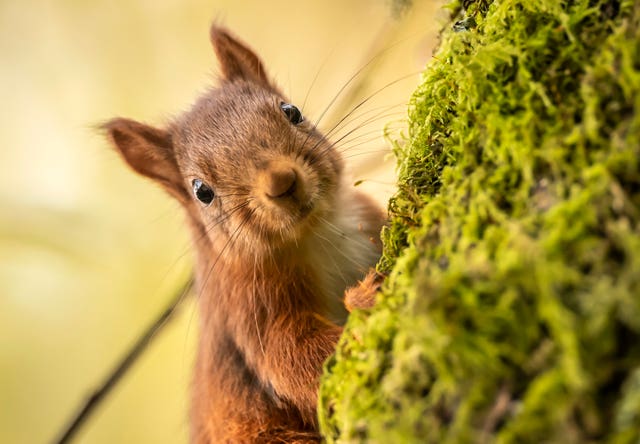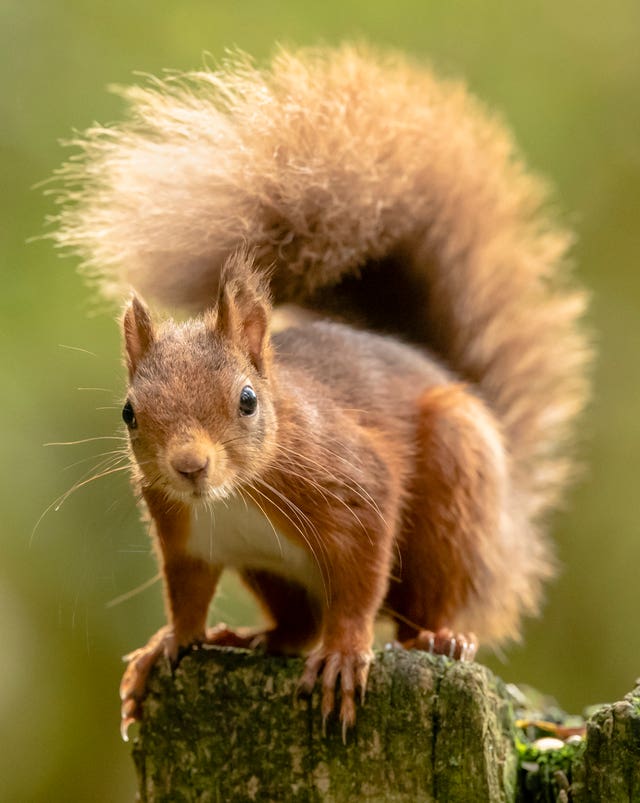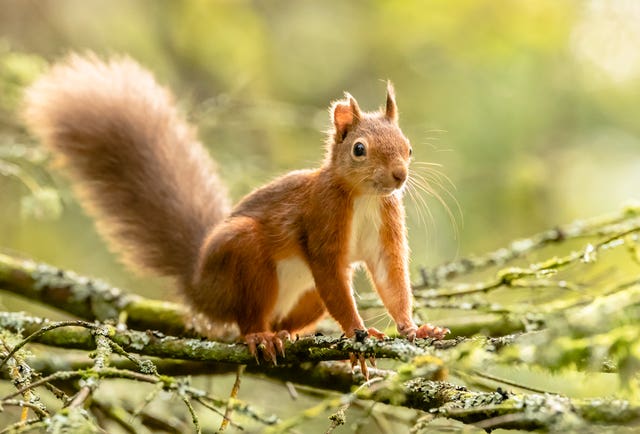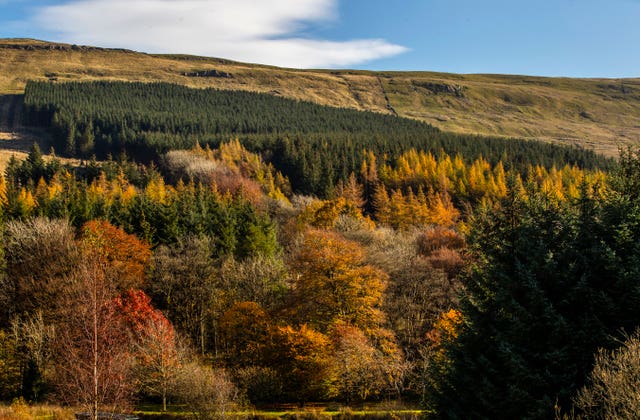Adorable, close-up photographs show red squirrels foraging for food and energetically running around in their forest habitat.
The pictures, taken in the Widdale Red Squirrel Reserve in North Yorkshire, show the nut-eating, tufty-tailed rodents scampering along wooden gates and thick branches in search of sustenance.
The shots give an up-close and personal perspective on the animals, who are greatly outnumbered in the UK by their grey counterparts.

There are fears that such images could become rarer in years to come, with red squirrel populations in the UK on the decline.
The UK Squirrel Accord, a nationwide partnership looking to secure the future of the animal, estimates that there are around 140,000 red squirrels in the UK, where years ago there were several million.
Kay Haw, the director of the group, told the PA news agency: “The greatest threat to the UK’s red squirrels is competition from and disease transmission by invasive non-native grey squirrels.
“They outcompete red squirrels for food and habitat, which negatively impacts red squirrel reproduction and survival rates.”

Red squirrels are native to the UK, while the grey variety arrived from North America in the 19th century.
Ms Haw said that grey squirrels carry but do not contract the squirrel pox virus, which they can transmit to their red counterparts with fatal consequences.
Efforts are therefore being made to ensure that grey squirrels are kept away from red squirrel areas to prevent the spread of disease and to minimise competition for food.
“Grey squirrels have already caused local extinctions of red squirrels and it is thanks to the dedication and activities of volunteer groups, partnerships and organisations that there have not been more losses,” Ms Haw added.


She said that red squirrels had been a common sight in the UK as recently as the 1950s but have seen a “catastrophic decline” since.
“Where grey squirrels have populated and thrived, red squirrels have declined”, Dr Tonkin said.
She added: “There’s something about the red squirrel that continues to fascinate people, they have that enchanting appearance, and it’s important they are protected.”






